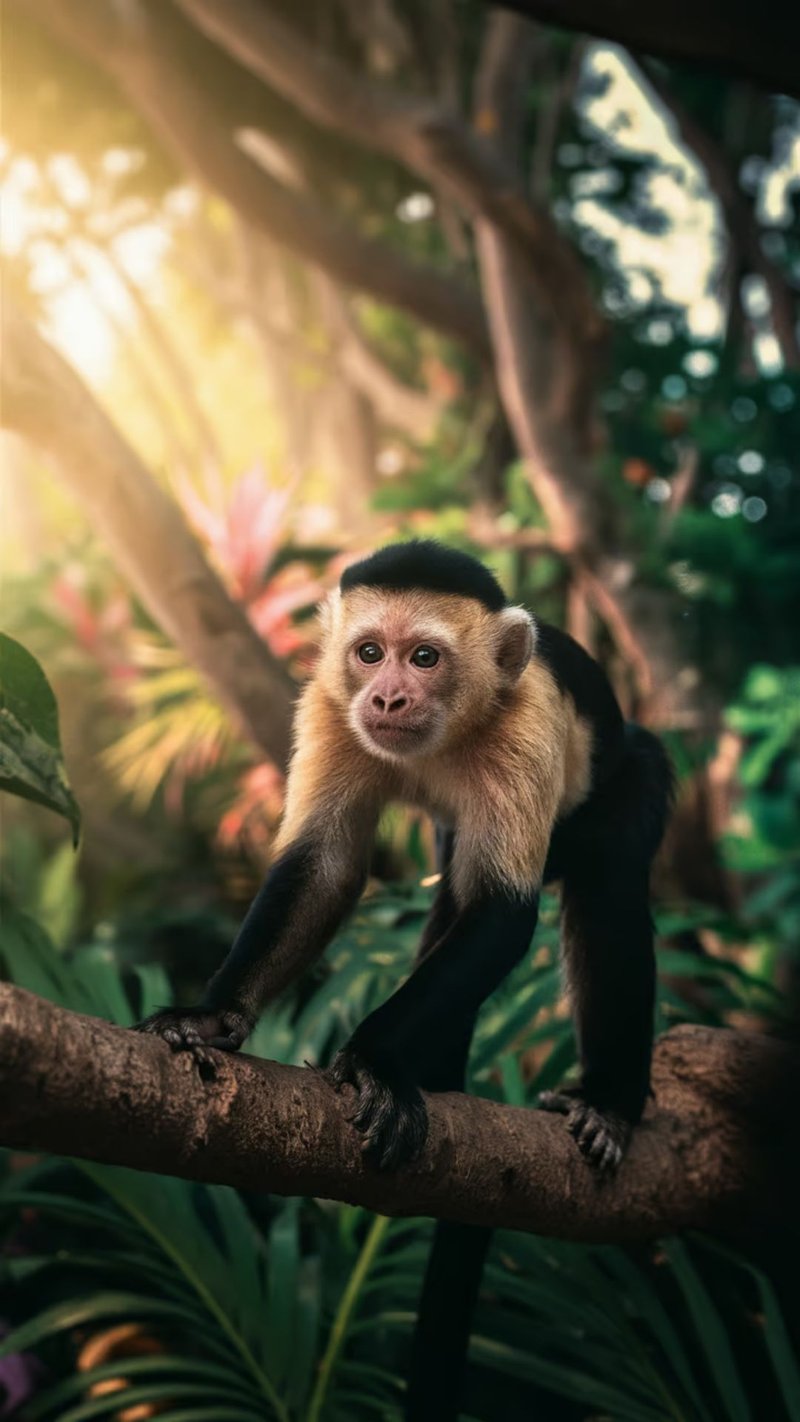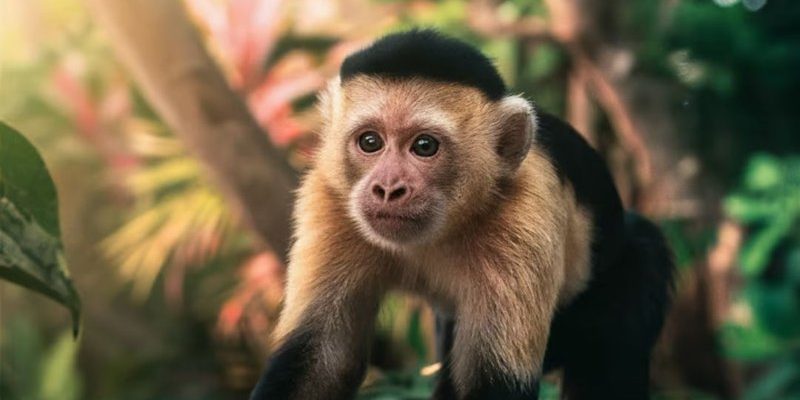
Capuchins live primarily in Central and South America, often found in lush environments like rainforests. These primates are highly social and intelligent—think of them as the brainiacs of the monkey world. They are known for their tool use, complex social interactions, and vocal communications. But beyond being cute and clever, they have significant ecological roles, especially as seed dispersers and foragers. Let’s dive deeper into the fascinating life of capuchin monkeys and how their actions ripple through their ecosystem.
Capuchin Monkeys: A Quick Introduction
Capuchin monkeys belong to the subfamily Cebinae, and there are several species, with the white-faced capuchin being one of the most recognized. They have a distinctive appearance with their light-colored faces and dark bodies, making them quite striking. These monkeys primarily eat fruits, nuts, insects, and small animals, which means they have a diverse diet.
Capuchins are also known for their sharp intelligence—some researchers have observed them using tools like sticks to extract insects from logs. This clever behavior showcases their ability to adapt to their environment. Honestly, it’s pretty impressive to watch them in action; they’re like little acrobats, performing tricks high in the canopies.
Social Structure
Capuchin monkeys live in social groups, which can include anywhere from ten to fifty individuals. This social structure is crucial for their survival. The monkeys groom each other to strengthen bonds and rely on vocalizations to communicate. You might be wondering why this is important—it’s all about cooperation! These relationships help them find food, alert each other to predators, and care for their young.
Their social nature also plays a role in their ecological impact. For example, when foraging, they often uncover food sources that other animals might miss. This teamwork enhances their ability to thrive in the wild.
Seed Dispersal: Nature’s Gardeners
Capuchin monkeys are essential for seed dispersal, a key process in maintaining healthy ecosystems. As they munch on fruits, they inadvertently help plants reproduce. Here’s how it works: when a capuchin eats a fruit, some seeds pass through its digestive system and are later excreted in a different location. This process spreads the seeds across the landscape, helping new plants grow in various areas.
Imagine them as tiny gardeners, sowing seeds as they roam. This action not only promotes biodiversity but also helps maintain forest health. More trees mean more habitats, cleaner air, and a balanced ecosystem. Without capuchins and other seed dispersers, many plants would struggle to thrive or spread.
The Connection Between Plants and Animals
The relationship between capuchins and the plants they feed on is a beautiful example of mutualism, where both species benefit. Plants provide food, and in return, capuchins help the plants reproduce. This connection is crucial for maintaining the ecosystem’s balance. Think about it: a rich diversity of plants supports a variety of animals, creating a thriving habitat.
In regions where capuchin monkeys are present, scientists have noted healthier forests. This success story highlights the importance of protecting these monkeys and their habitats to ensure the overall health of the environment.
Foraging Behavior and Ecological Balance
Capuchin monkeys are known for their foraging behavior, which significantly influences their surroundings. They search for a variety of foods, including fruits, nuts, and insects. As they do this, they play a role in controlling insect populations and helping plant life flourish.
Here’s the thing: when capuchins forage, they also create opportunities for other animals. For instance, leftover fruit and seeds from their meals can attract various species, contributing to a diverse and dynamic ecosystem. Essentially, capuchins are like the hosts of a party—by sharing their food, they keep the guest list full and vibrant.
Their foraging habits also create pathways through dense vegetation, making it easier for other animals to navigate the forest. This interconnected web of activity is essential for maintaining biodiversity. Without the capuchins’ influence on their environment, many other species could struggle to survive.
Competing Species and Ecological Roles
In the wild, capuchin monkeys share their environment with numerous other species. As they forage, the competition for food can be intense, especially with other primates and animals. However, capuchins have adapted uniquely to this competition. For example, they often feed on different parts of a plant compared to other creatures, which reduces competition.
This ability to adapt is crucial for maintaining balance in their ecosystem. By diversifying their diet and behaviors, capuchins ensure that they survive while also allowing other species to thrive. It’s a delicate dance of coexistence, where each species plays its part.
The Threats Facing Capuchin Monkeys
Unfortunately, capuchin monkeys face several threats that jeopardize their role in the ecosystem. Habitat loss due to deforestation, urbanization, and agriculture significantly reduces their living spaces. When their homes are destroyed, their ability to forage, disperse seeds, and interact with their ecosystem suffers.
Moreover, illegal pet trade and hunting also pose serious risks. When capuchins are removed from their natural habitats, not only do we lose these fascinating creatures, but we also disrupt the intricate balance they maintain in their ecosystems. Protecting these monkeys is essential not just for their survival but for the overall health of the forests they inhabit.
Conservation Efforts
Many organizations and researchers are working hard to protect capuchin monkeys and their habitats. Conservation efforts include establishing protected areas, promoting sustainable land use, and raising awareness about the importance of these primates.
Community involvement is also key. Educating local populations about the ecological significance of capuchins encourages them to support conservation efforts. When people understand the vital role these monkeys play, they’re more likely to advocate for their protection.
Why Capuchin Monkeys Matter to Us
You might be wondering why we should care about capuchin monkeys and their ecosystems. The answer is simple: a healthy environment benefits everyone. Capuchins contribute to the vitality of forests, which in turn supports countless species, including ourselves. These ecosystems provide essential resources like clean air, water, and food.
Protecting the capuchin monkeys also means investing in our planet’s future. Healthy ecosystems help mitigate climate change, preserve biodiversity, and maintain the balance necessary for a thriving Earth. So, the next time you hear about these lively little creatures, remember their impact goes far beyond just being cute and entertaining.
In conclusion, capuchin monkeys are integral to their ecosystems in many ways. From seed dispersal to enhancing biodiversity, they play a critical role in maintaining the health of the environments they inhabit. As we learn more about these fascinating creatures and the challenges they face, we can better appreciate their significance and work towards their preservation. By supporting conservation efforts, we can help ensure that capuchin monkeys continue to thrive and contribute to the ecosystems they call home.

